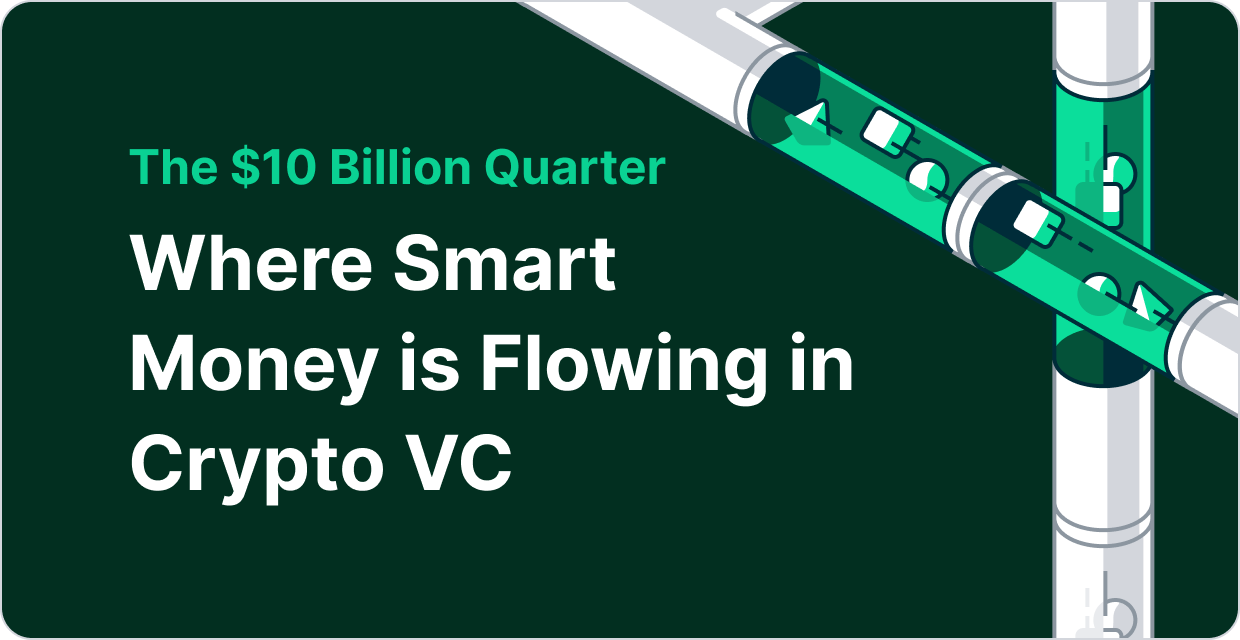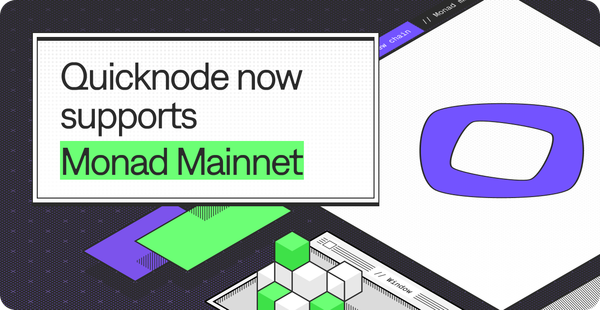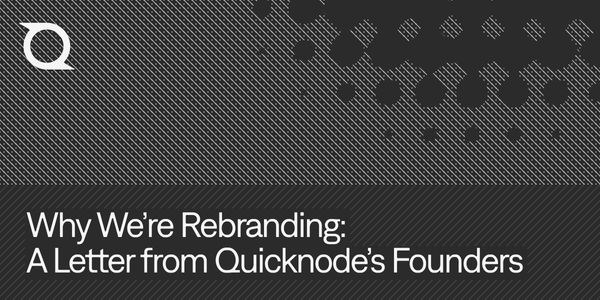The $10 Billion Quarter: Where Smart Money Is Flowing in Crypto VC (Q2 2025)
In Q2 2025, crypto VC funding surged to $10.03 billion, led by mega-deals, infra plays, and tokenization. Here’s where capital landed and what it signals for the next crypto cycle.

Q2 2025: Crypto VC Funds Hit a Bull‑Market Epoch
Crypto venture funding reached a peak unseen in years: $10.03 billion raised between April and June 2025. This marks the highest quarterly raise since Q1 2022, a pivotal moment in the post-FTX cycle. Fueling this resurgence was June 2025, which alone clocked $5.14 billion, making it the most active fundraising month in over three years.
But this isn’t a return of frothy capital chasing speculative narratives. Instead, the surge followed a seismic shift in U.S. regulatory clarity, particularly around digital asset custody and tokenized securities, which re-opened the gates for institutions to deploy serious capital. The tone of funding this quarter was mature, deliberate, and focused, the return of smart money in its purest form.
“Smart money” isn’t just capital, it’s capital with discipline. It refers to institutional allocators, top-tier VCs, and crossover funds that don’t chase hype. They front-run narratives, back infrastructure before it trends, and understand regulatory nuance as a competitive edge.
To truly appreciate how meaningful this shift is, it’s important to look back and compare it to crypto’s last bull market, a time when capital flowed freely, often recklessly.
How Today’s VC Flows Differ from the Bull Market Frenzy
The funding environment in Q2 2025 looks nothing like the wild days of the 2021–2022 bull run. Back then, venture capital was pouring into the space at breakneck speed, fueled by easy money and unfiltered hype.
- Money Everywhere: Capital inflows were relentless, propped up by macro tailwinds and speculative excitement.
- Sky-High Valuations: Startups raised at bloated valuations, often detached from product-market fit or long-term viability.
- Minimal Due Diligence: Many rounds were closed in days, driven by FOMO rather than fundamentals.
Fast forward to 2025, and the landscape has matured:
- Targeted Capital Flows: Investors are channeling money into fewer areas — notably AI x crypto convergence, infra layers, and Bitcoin-native products.
- Selective Backing: VCs are scrutinizing business models and revenue paths, not just pitch decks and buzzwords.
- Compliance-First Thinking: Regulatory readiness is no longer optional — it’s a dealbreaker.
This isn’t just a slower cycle, it’s a smarter one. Hype has given way to discipline. Smart money wants real returns, and founders are showing up with real fundamentals.
This evolution in investor mindset is evident in the size and nature of the capital deployed. Q2 wasn’t just high volume, it was high conviction.
Mega‑Rounds & Mature Capital: A Return to Fundamentals
Q2 2025 wasn’t about spray-and-pray checks, it was about size, conviction, and clear strategic intent. The quarter saw 31 mega-rounds of over $50 million. These went primarily to companies with either proven revenue, regulatory compliance, or deep infra advantage.
Noteworthy raises included:
- Strive Funds — $750M for long-term Bitcoin infrastructure and staking primitives
- TwentyOneCapital — $585M focused on sovereign-grade BTC custody and yield strategies
- Securitize — $400M to advance tokenized RWA platforms backed by large TradFi players
- Kalshi — $185M to expand CFTC-regulated prediction markets into institutional hedging
- Auridine — $153M to scale DePIN and autonomous crypto-AI agents
- ZenMEV — $140M for compliant MEV extraction services for exchanges and funds
- Digital Asset — $135M focused on hybrid chain deployments and tokenized banking infra
What’s particularly telling is the nature of these raises: compliance-first, infrastructure-focused, and multi-cycle aligned. Teams that survived previous downturns and built resilient foundations were finally rewarded, not with valuations inflated by hype, but by capital seeking durable market impact.
These mega-rounds aren't just about confidence, they're also about defensive plays. In a landscape with fewer breakout opportunities, VCs double down on safer bets that can capture market share quickly or absorb smaller competitors.
But beyond the numbers, the real story lies in where that capital actually landed and what those placements tell us about the direction of the entire ecosystem.
Where Smart Money Flowed (and Why It Matters)
This wasn’t just a high-capital quarter, it was a high-signal one. Smart money’s moves in Q2 outlined where crypto is heading:
- Tokenized finance infra: $400M into Securitize and $135M into Digital Asset show that regulated wrappers for equities, bonds, and funds are moving from pilot to production.
- Bitcoin-native capital products: Over $1.3B into Strive and TwentyOneCapital indicates that BTC is evolving from passive exposure to active financial infrastructure.
- DePIN x AI convergence: Auridine’s raise and other similar plays signal growing conviction in crypto’s role as a substrate for decentralized compute and autonomous AI coordination.
- Real-world rails: Kalshi, World Liberty Finance, and similar teams are building bridges for governments, hedge funds, and banks to access on-chain systems without sacrificing compliance.
Modular infrastructure is surging because it aligns with the growing modular thesis, where different layers specialize in execution, data availability, and settlement. It’s no longer about building full-stack; it’s about building composable, optimized components.
Smart money didn’t just invest in sectors, it made a strategic reallocation toward primitives that offer distribution, compliance, and real-world interoperability. The message is clear: this cycle is about infrastructure that moves real assets, not narratives that move sentiment.
With that context in mind, let’s take a closer look at the sectors and standout projects that smart capital is backing this cycle.
Sectors in Focus and Notable Bets of the Quarter
While capital has become more selective, certain sectors are still seeing aggressive inflows, especially where monetization paths are clearer.
RWA platforms, stablecoin issuers, and both centralized and decentralized finance players are still drawing strong interest. These categories benefit from predictable revenue streams and increasing regulatory clarity, making them more attractive in a market that now values sustainability over speculation.
Blockchain infra continues to get funded too, but the narrative has shifted. Instead of launching new "everything chains," founders are carving out niches with highly specialized chains tailored to specific ecosystems or use cases.
AI x crypto remains a hot theme across pitch decks, but investors are treading cautiously. The conviction is there, but scalable business models haven’t emerged yet, making this more of a wait-and-watch zone for most funds.
Some standout raises this quarter highlight these themes:
- Securitize landed a massive $400M round from Mantle, with past backing from giants like BlackRock, Circle, and Aptos. As a leader in the RWA vertical, it’s well-positioned to dominate tokenized financial products, especially with Mantle now in the picture.
- Kalshi, a regulated prediction markets platform and Polymarket rival, raised $185M at a $2B valuation. With investors like Paradigm and Sequoia behind it, Kalshi is expected to dive deeper into Web3 rails while leveraging its regulatory licenses and existing user base.
- World, a new player from Sam Altman, raised $135M from a16z and others. The project is making early moves in DeFi and is rapidly scaling TVL, likely gearing up for broader ecosystem expansion.
- World Liberty Financial raised $125M and introduced its own stablecoin. While the roadmap remains vague, its public association with the Trump family alone has turned it into a media and market magnet.
These deals are a signal: capital is still flowing, but it’s hunting credibility, traction, and the ability to survive the next cycle, not just hype.
Interestingly, much of the capital wasn't just early-stage or experimental, a significant chunk flowed into mature, late-stage rounds, revealing even more about the market’s current priorities.
The Rise of Late-Stage Capital
Another major trend this quarter was the resurgence of late-stage fundraising, IPOs, acquisitions, debt financing, and post-IPO growth rounds.
These are no longer bets on distant potential. They’re backed by revenue, users, and real-world traction. Most late-stage funding landed at the Web2/Web3 crossover: centralized exchanges, mining firms, investment platforms, and regulated stablecoin providers.
Notable stats:
- 31 deals exceeded $50M in Q2.
- Few deals under $1M were recorded, early-stage capital is scarcer.
- More than half the rounds were strategic or undisclosed, hinting at bespoke deal terms and non-traditional fundraising structures.
We’re seeing a move away from cookie-cutter pre-seed → seed → Series A pipelines. Instead, capital is getting more modular and context-specific, adapting to market cycles, traction levels, and regulatory pressure.
Founders who can’t pivot fast? They’re fading.
So who’s leading the charge in this refined capital environment? Let’s look at the VCs and funds driving this quarter’s deal momentum.
Who’s Writing the Checks?
A small group of aggressive, thesis-driven funds dominated deal flow:
Not all capital is created equal. Coinbase Ventures tends to make strategic ecosystem bets that benefit its product suite and listings pipeline. Animoca stays committed to onboarding consumers through gaming and IP plays. Paradigm and Galaxy are laser-focused on modular DeFi and tokenized fund experiments, while Hack VC is becoming a leader in early-stage modular and AI-powered infra, not afraid to lead and structure rounds from day zero.
What united these firms was a focus on interoperability, regulation, and revenue, not storytelling. Many doubled down on past portfolio companies who demonstrated staying power.
Just as telling as what did get funded, is what didn’t. The absence of capital in certain narratives speaks volumes about where the industry is heading.
What Didn’t Get Funded (and Why That Matters)
This cycle marked a departure from old narratives. Smart money actively avoided:
- Memecoins — Zero meaningful VC exposure
- New L1s — Unless with clear performance edge or unique distribution
- DAO tooling — Dry pipeline unless tied to revenue or scale
- NFT marketplaces — Ignored without IP depth, royalties innovation, or creator-first models
If your project couldn't speak the language of compliance, composability, or cash flow, it didn’t get funded.
The hesitation toward consumer-facing crypto apps often stems from brutal CAC (customer acquisition cost) and poor LTV (lifetime value) dynamics. In many cases, even well-designed apps failed to break out due to lack of trust, unclear regulation, or simply insufficient demand outside the crypto-native crowd.
All of this points to a market that’s sobering up, prioritizing substance over speculation. And it sets the stage for a more grounded, yet still ambitious crypto cycle ahead.
Conclusion: This Was a Quarter of Intent, Not Noise
Q2 2025 was not about exuberance, it was about precision. The $10.03 billion deployed this quarter didn’t flood meme coins or speculative assets. It was directed by institutional conviction, legal clarity, and a desire for real-world traction. The capital went into infrastructure designed to carry trillions, not trends built to fade in weeks.
Smart money is no longer on the sidelines. It’s building liquidity rails, funding sovereign custody, tokenizing hard assets, and shaping the rails for global on-chain finance. This marks the beginning of a multi-cycle evolution, where infrastructure is not optional, it’s the investment thesis.
For founders, the signal is clear: Build systems that TradFi can plug into, not just crypto-native toys. For investors, follow the allocations, not the anecdotes. The next wave of market leaders won’t be loud, they’ll be compliant, composable, and quietly eating market share.
About QuickNode
QuickNode provides the tools and resources builders need to create incredible products. With a globally balanced infrastructure, guaranteed reliability, a user-friendly interface, and end-to-end customer support, QuickNode allows enterprises to realize their ideas on the chain rapidly.





